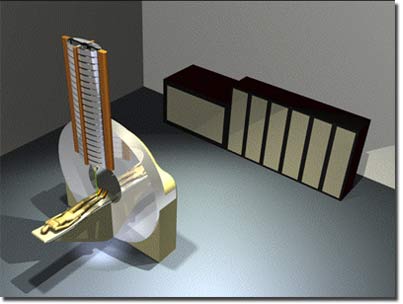Thanks to a technology transfer agreement between Lawrence Livermore National Laboratory and TomoTherapy of Madison, Wisconsin, the first compact proton therapy system is one step closer to reality.
Proton therapy is considered the most advanced form of radiation therapy available, but size and cost have to date limited the technology’s use to only six cancer centres in the US.
The result of defence-related research, the compact system was developed by scientists at Lawrence Livermore National Laboratory in a project jointly funded by the Laboratory and UC Davis Cancer Center.
TomoTherapy will fund development of the first clinical prototype, which will be tested on patients at UC Davis Cancer Center. If clinical testing is successful, TomoTherapy will bring the machines to market.
Conventional radiation therapy kills cancer cells using high-energy X-rays. But unlike high-energy X-rays, proton beams deposit almost all of their energy on their target, with a low amount of radiation deposited in tissues from the surface of the skin to the front of tumour, and almost no “exit dose” beyond the tumour. This property enables doctors to hit tumours with higher, potentially more effective radiation doses than is possible with gamma radiation.
Charged protons were first used in the successful treatment of human cancer in experiments at the Berkeley Radiation Laboratory more than 50 years ago. But the machines can cost more than $100m to build and can require 90,000 square feet to house.
The compact system, however, is expected to fit in standard radiation treatment suites and to cost less than $20m. The compact system will be mounted on a gantry that rotates about the patient.
George Caporaso, the lead scientist on the project at Lawrence Livermore and his team, overcame the size obstacle by using dielectric wall accelerator technology developed through defence research. The Livermore scientists have demonstrated in principle that this technology will enable proton particles to be accelerated to an energy of at least 200 meV within a light-weight, novel, insulator-based structure about 6.5 ft long. It also won’t use any bending magnets, and will be able to change the protons’ energy and intensity between each burst that occurs many times per second.

Compact proton radiotherapy treatment concept. Illustration by Steven Hawkins.
Currently available proton therapy machines use cyclotrons or synchrotrons nearly 10 feet in diameter and weighing up to several hundred tons. This equipment includes the enormous gantry and bending magnets necessary to focus and direct the beams onto patients.
In addition to overcoming size and cost obstacles, the compact system will improve on existing full-scale systems by including the capability to vary the energy, intensity and ‘spot’ size of the proton beam. Radiation will be produced in rapid pulses, creating small ‘spots’ of dose throughout the tumour.
Currently only one proton facility in the world, the Paul Scherrer Institute in Switzerland, is able to deliver this intensity-modulated proton therapy (IMPT). IMPT is generally considered the best way to destroy tumours while minimizing damage to surrounding healthy tissue.




Nanogenerator consumes CO2 to generate electricity
Whoopee, they've solved how to keep a light on but not a lot else.